East Hereford 1800-1926
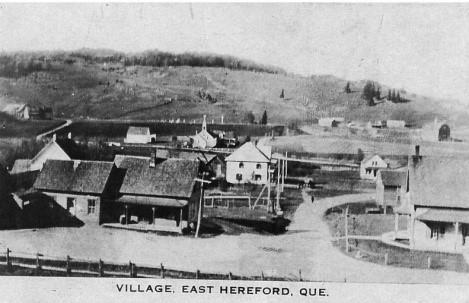
Settlers had already begun coming into the area south of the boundary line known today as Coos County. It so happened that the first colonists to settle in the Township of Hereford were Americans who did not really know whether or not they lived in the United States or Canada. The government of Lower Canada provided Letters Patent on November 6, 1800 to James Rankin and his associates with the intention that the southern part of Hereford Township would be colonized. The Township of Drayton was also located in this county. This township, despite several surveying requests, never received Royal Assent but would become important in all the legal uncertainty resulting in the 1832 Constitution of Indian Stream.
Progress was slow at this time. The population of the township went from 200 inhabitants in 1815 to 171 inhabitants in 1831. As a whole, these inhabitants were English speaking and they originated from England, Wales, Ireland, and the United States (43%). Universalists, Baptists and Protestants shared the religious beliefs of these settlers. The economy was primarily based on agriculture. It was the same in Drayton Township as in Hereford Township - the settlers did not know if they were living in Canada or the United States. Why?
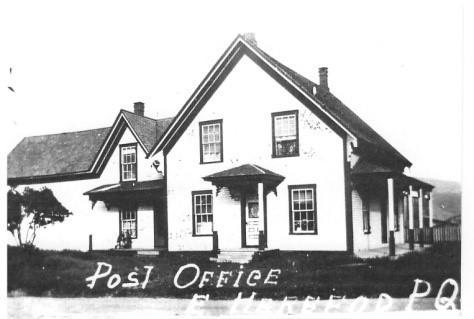
According to the Treaty of Versailles in 1783, Great Britain recognized the independence of the United States. At that time the boundary line was designated as the headwaters the most northwest of the Connecticut River. There were several headwaters, Hall Stream, Indian Stream and Perry Stream. Which was the correct one? In addition, the maps had been lost. The people of the region were fed up with all these goings-on and created the Republic of Indian Stream. It was therefore on the day of July 9, 1832 that an important meeting was held in the Center Schoolhouse resulting in the creation of a free and independent State. Bordered on the southeast by the Connecticut River and Indian Stream and on the west by Hall Stream, the new Republic was almost entirely modeled on that of Pittsburg, N.H., today a neighboring town near us on the American boundary.
Almost forgotten was the fact that neither the Canadians, Americans or the 59 settlers present at this meeting on July 9th would never be served better than by themselves. Thus by a vote of 56 against 3, and deprived for the laws and protection of any government, they adopted a constitution composed of 13 Articles to preserve the union newly created and to safeguard justice, security, peace and a common defense system based loosely on the Bill of Rights. A five-member board would exercise the civil and military powers but the regulations and resolutions would have to be submitted to and accepted by the General Assembly.

Was the Republic merely a municipality in makeup? In his writings, Francis-Joseph Audet replied that this Republic was indeed a sovereign and independent State exercising the duties of that State. He also stated that this small State would go on to play an important role along with Great Britain and the United States concerning the border negotiations.
In our small corner of the country, the land is also fed by many streams, the farmers felled many trees in the forest and harvested flourishing crops from the field. At the beginning of 1835, the Republic was very prosperous and 69 families consisting in an overall population of 414 citizens. Each family owned 100 acres of land and there were more than fifteen hundred acres under cultivation. Despite everything, the peace of these few years would not last. Greed from both the British and American factions would cause acts of violence from both sides. Arrests and imprisonments of well known residents by sheriffs from Coos County and from Sherbrooke would lead to an untenable situation. Repeated requests for protection from the government of Lower Canada went unanswered. Many residents became discouraged. Many left the area as it became inhospitable to them and others left for New Hampshire to avoid bloodshed. The territory of the Republic was integrated into Coos County and in 1840, Pittsburg, N.H. was organized.
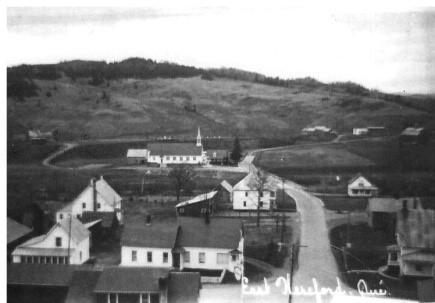
The final settlement of the boundary line issue would still go on to drag for another two years. On August 9, 1842, the Webster-Ashburton Treaty officially set the boundary line at Hall Stream, the most westerly of the streams draining into the Connecticut. At the stroke of the pen, the three Townships of Drayton, Croydon, and Stanhope ceased to exist. One can speak easily of the British loss of rights, Lord Ashburton considering these acres of snow and woods unnecessary. But when you are aware of the beauty of the lakes, sites and value of the forest land, the only Township of Draets, the only Township of Drayton, and the Indian Stream territory, you would understand that all this was a considerable loss to Lower Canada.
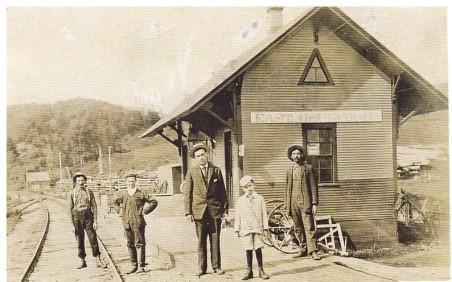
The first Council Meeting for the Municipality of Hereford Township took place on January 9, 1860 under the chairmanship of Mayor Aaron Workman and all the councillors were English speaking: Alexander Andrews, Charles O. Hibbard, Sylvester Beacher, Eznar Bigelow and Levi R. Dean and Wellington Nichols. The first French speaking names on the council appear around 1864: Flavien Paquette and Joseph Lambert. Take note that the municipality includes all of Saint-Venant de Paquette, all of East Hereford and a part of St. Hermenegilde. Through the following years, more and more French speaking people sat at the Council but it would not be until April 4, 1949 that the minutes of the meeting would be written up in French.
After more than half a century of settlement by English speaking people, the northern part of the Township had still not been surveyed. However, in 1861, under the assistance of Father Jean-Baptiste Champeaux, came the arrival of many French Canadian settlers, in part from the area around Beloeil. On July 21, 1862, a decree was issued authorizing the erection of the first Catholic chapel. Subsequently, over the following years, francophone settlers moved into the southern part of the Township. With the ever increasing population, it became obvious that the chapel was not big enough. The subject of where to build the new church was debated for several years. It would eventually be built in what is now the village of St. Venant de Paquette, a wooden church which today is classified as a heritage site. However, this would not be the final word of the settlers in the east.
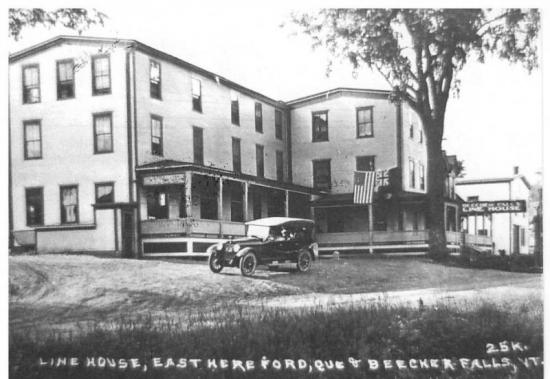
On the 1863 map, are found schools, at least one sawmill, post office, customs, an astronomical station, and two French-sounding names, Paquette and Lambert. The forest industry gained in importance mainly in the western and the eastern parts of the Township. It was in these areas that the largest properties and their occupants could be found. In 1881, the population was established at 1498 persons. The Van Dyke family, of Dutch origin, in particular the brothers Georges and Thomas-Henry, are noteworthy. Georges bought and paid $100.00 for a lot in the Township. Several years later, he would become the owner in Hereford of more than 5,600 acres and another 4,000 acres along with the Heath family. He and his brother Thomas-Henry furnished wood to the Connecticut River Lumber Company of which Georges was a major shareholder. This brother would later play a key role in the coming of the railroad in 1887 in the eastern part of the Township, the Hereford Branch Railway.
In 1903, the southwestern part of the Township is attached to a part of Barnston Township to form the Corporation of St. Hermenegilde. Between the two remaining areas, things did not go so well. As the francophones were mainly established in the north and forestry operations required much labor to the center and east, the addition of a chapel and a parish became necessary for East Hereford. In 1896, a request was made to the diocese for the construction of a modest chapel but efforts to build this chapel would drag on for ten years. In 1907, a meeting of important people, with Thomas-Henry Van Dyke as the leader, requested the creation of a new parish and the construction of a church. The parishioners of St. Venant strongly opposed this request. Despite everything, on December 20, 1907, Father Thomas O'Neil (he resigned from St. Venant), celebrated the first mass in East Hereford. On June 11, 1917, was the constitution of the Municipality of the Parish of St. Venant.
In 1925, train service ceased and the station master, Joseph Alphonse Laverdiere, also mayor at this time, was to leave the municipality in 1926. The local economy was somewhat ambivalent with this departure being as the people were proud of their entrepreneurs. The deaths and the departures of many English speaking people promoted the arrival of French speaking people knowing a certain amount of business. Emmanuel Beloin, Freddy Beloin and Eddy Riendeau were important residents in the history of the municipality, especially in the timber trade.
Source: Diane Lauzon Rioux



